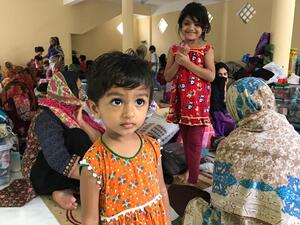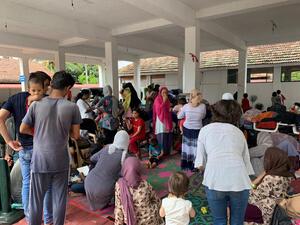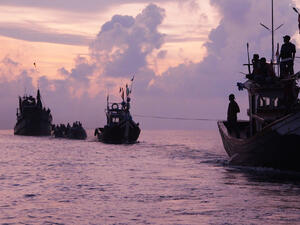Renewed fighting disrupts Sri Lanka returns, UNHCR urges humanitarian access
Renewed fighting disrupts Sri Lanka returns, UNHCR urges humanitarian access
A new flare-up of fighting in Trincomalee District has put an end to the return of displaced civilians from Kanthale to Muttur Town, a return that had started in the last week. We had seen some families returning to their own homes, at least in the daytime, but that movement has now come to a halt.
The new shelling around Trincomalee comes as the number of civilians displaced within Sri Lanka since April reached 214,981. This may not reflect the full number, since we do not yet have access to all the areas hosting displaced persons. In addition, 11,057 Sri Lankan refugees have arrived on the shores of Southern India since the start of the year, after crossing the Palk Strait in boats that are often overloaded and unseaworthy.
To ensure the needs of people displaced within Sri Lanka are met promptly and efficiently, UNHCR - as part of a joint UN humanitarian action plan for Sri Lanka - is appealing for more than US$5 million to help provide shelter, emergency supplies and protection. The UN Common Humanitarian Action Plan (CHAP), launched in Geneva on Wednesday, is appealing for a total of $37.46 million, including $5.13 million for UNHCR.
One positive development is that 23 lorries carrying food for displaced civilians were granted access to Kilinochchi District on Tuesday (26 Aug.). However, with so many mouths to feed, more supplies are urgently required. We call upon the Government of Sri Lanka and the Liberation Tigers of Tamil Eelam (LTTE) to allow critical humanitarian aid to reach those in need.
We are encouraged that restrictions on freedom of movement have been eased in Batticaloa District, with UN agencies, ICRC and the Sri Lanka Monitoring Mission now permitted to enter the LTTE-controlled area. UNHCR expects further access to reach larger sectors of the displaced population. Government officials, including schoolteachers, are now also allowed to enter the LTTE-controlled area, although only on foot, and not in vehicles.





